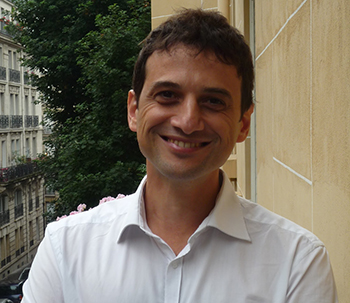Lecture: Armenian Genocide Survivor Testimonies Undervalued for Decades by Historians

 In the immediate aftermath of the Armenian genocide, thousands of Armenian survivors recorded testimonies detailing the atrocities they witnessed at the hands of the Ottoman Turks during World War I.
In the immediate aftermath of the Armenian genocide, thousands of Armenian survivors recorded testimonies detailing the atrocities they witnessed at the hands of the Ottoman Turks during World War I.
And yet it wouldn’t be until the 1990s before historians would begin taking these oral histories seriously.
This was a theme of a lecture given Monday, Oct. 16 by Boris Adjemian, director of the Armenian General Benevolent Union (AGBU) Nubar Library in Paris.
“The reluctance of historians to use victim testimonies was absurd,” he said, at the lecture co-hosted by USC Shoah Foundation Center for Advanced Genocide Research and the USC Institute of Armenian Studies. “Pretending to write an objective history, historians were avoiding victim testimonies … as if the victims’ words were disqualified as being merely subjective perceptions of their experiences.”
In his lecture, titled "Armenian Genocide Survivor Testimonies and the Evolution of Their Use," Adjemian said that until relatively recently, academia has favored official documents and diplomatic and governmental sources – as well as testimonies recorded by elite third-party witnesses, such as journalists and doctors – over those of the victims themselves. This, he said, was true of most genocidal atrocities committed during the 20th century, and the Armenian case is no exception.
“Historians have tended to distrust and neglect victims’ testimonies,” he said, even though such interviews were often publicized in news reports at the time.
Adjemian said three major archives of witness testimonies were gathered just after the genocide, which occurred mostly in 1915-16.
One was collected in 1919-20 by a team of about a dozen authorities who were part of what was the new Armenian state. They interviewed about 600 refugees who’d settled in cities like Yerevan.
The testimonies were published two years ago by the National Archives of Armenia in Yerevan, Armenia.
Another was gathered by the Armenian Patriarchate of Constantinople, a church that worked in close collaboration with Allied Powers after the war. This group produced written accounts of about 1,500 Armenians, most of them from western Turkey. Gathered from 1918 to 1920, these four- to eight-page testimonies currently live in the Armenian Patriarchate of Jerusalem
A third major corpus of testimonies was gathered by Armenian journalist Aram Andonian, who became the first director of the Nubar Library in Paris, where Adjemian works.
Himself a survivor of the genocide, Andonian escaped his captors and lived in the Aleppo underground. While there, he began collecting testimonies of other Armenians who’d fled persecution. All told, his roughly 4,000-page collection, which he continued compiling until his death in 1951, includes about 1,000 testimonies. They are stored at the Nubar Library in Paris.
Among the many reasons historians didn’t take such testimonies seriously until the 1990s, Adjemian said, is how, for many decades, historians making a case for Turkish culpability in the atrocities argued from a defensive position. That defensive position was due to the strong denialist rhetoric during the 1970’s to 90’s, which is still promoted by the Turkish government.
Over time, as the case for genocide became a consensus, historians grew more interested in the voices of the survivors themselves.
“They were not prisoners anymore of this obligation to bring evidence of the genocide” to bear, Adjemian said.
Like this article? Get our e-newsletter.
Be the first to learn about new articles and personal stories like the one you've just read.